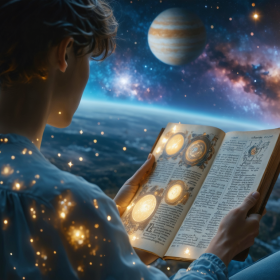Embark on a celestial journey to unravel the mysteries of the zodiac! This ancient system, steeped in astrology, divides the year into twelve segments, each associated with a specific constellation. These signs are believed to influence our personalities, relationships, and destinies. Prepare to delve into the fascinating world of astrology and discover how your zodiac sign shapes who you are.
The Origins and Evolution of the Zodiac
The concept of the zodiac, a celestial belt divided into twelve segments, each associated with specific signs, has roots stretching back millennia to the ancient Near East. Its earliest identifiable origins lie in Mesopotamia, specifically Babylonia, around the 1st millennium BCE. The Babylonians were keen observers of the night sky, developing sophisticated astronomical techniques primarily for agricultural and divinatory purposes. They created star catalogs and noted the paths of the sun, moon, and planets against the backdrop of specific star groupings. This early zodiac, often depicted on tablets like the MUL.APIN, was initially more an astronomical framework for tracking time, particularly the changing seasons tied to farming cycles, and predicting celestial events. The division into twelve sections likely mirrored their base-60 number system and the approximately twelve lunations in a year.
The Babylonian astronomical knowledge spread, influencing neighboring cultures. In ancient Egypt, astronomical observations also played a crucial role, particularly for predicting the annual flooding of the Nile, vital for agriculture. While they had their own system of decans (36 groups of stars used for timekeeping), elements of the Babylonian zodiacal concept were later integrated, particularly during the Ptolemaic period, enriching their astronomical and astrological practices.
The most significant development for the modern Western zodiac occurred in ancient Greece. The Greeks adopted and Hellenized the Babylonian system, giving the constellations the names and mythological associations largely familiar today. Greek astronomers like Hipparchus (2nd century BCE) made pivotal contributions, not least his discovery of the precession of the equinoxes, an astronomical phenomenon where the Earth’s slow wobble causes the position of the vernal equinox point (the point where the sun crosses the celestial equator in spring) to gradually shift westward against the backdrop of the stars over thousands of years.
This astronomical discovery, though known, was largely compartmentalized from the astrological system codified later. Claudius Ptolemy, a Hellenistic scholar in Roman Egypt in the 2nd century CE, synthesized existing Greek and Babylonian astrological traditions in his influential work, the *Tetrabiblos*. Ptolemy based his astrological system on the twelve equal 30-degree segments starting from the vernal equinox point. This system, which defines the signs based on seasons and equinox/solstice points rather than the physical constellations, is known as the tropical zodiac and is the foundation of Western astrology.
The twelve signs of the tropical zodiac are Aries, Taurus, Gemini, Cancer, Leo, Virgo, Libra, Scorpio, Sagittarius, Capricorn, Aquarius, and Pisces. While these signs were originally named after the constellations that roughly occupied those segments of the sky around 2000 years ago, the precession of the equinoxes means that the vernal equinox point has moved significantly. Currently, the vernal equinox point is located within the constellation of Pisces, almost a full constellation away from the constellation Aries, where it was when the tropical zodiac was established. This astronomical reality led to the distinction between the tropical zodiac (based on the moving vernal equinox) and the sidereal zodiac (which attempts to align the signs more closely with the actual, observable positions of the constellations, using a fixed star or a calculated average as a reference point). Different astrological traditions, particularly Western astrology (which predominantly uses the tropical zodiac) and Vedic or Indian astrology (which primarily uses the sidereal zodiac), utilize these different systems, leading to different sign placements for the same birth date.
Despite the astronomical shift and the existence of different systems, the twelve zodiac signs have maintained remarkable cultural resonance. They have appeared in art, literature, and various belief systems across diverse cultures, evolving from tools for timekeeping and agrarian planning into complex symbols associated with personality archetypes and life paths. This enduring appeal highlights humanity’s persistent fascination with the cosmos and its perceived connection to earthly existence. The zodiac, regardless of the specific system used, provides a rich symbolic language for exploring human nature and our place within the greater celestial theater, offering a framework for understanding ourselves and our interactions, which we will explore further by examining the specific characteristics associated with each sign.
Zodiac Signs Unveiled Personality Traits and Characteristics
exploring the twelve segments of the tropical zodiac reveals distinct archetypes, each representing a unique blend of cosmic energies. these energies are fundamentally influenced by the sign’s element, modality, and ruling planet, shaping its core personality, strengths, weaknesses, and typical behaviors across various life domains like career, relationships, and personal growth. furthermore, the concept of decans subdivides each sign into three ten-degree portions, adding layers of nuance to the interpretation, often reflecting a blend with the energies of other signs or planets within the same element.
the first sign, Aries, ruled by Mars, is a cardinal fire sign. Aries embodies action, courage, and initiation. their key traits include enthusiasm, impulsiveness, assertiveness, and a pioneering spirit. strengths lie in their bravery and ability to start things, while weaknesses can manifest as impatience, recklessness, and a tendency to be easily angered. In a career, they excel in leadership roles or fields requiring energy and quick decisions, like entrepreneurship or sports. In relationships, they are passionate but can be self-centered. Decans can influence their expression, with early Aries often being pure Martian energy, while later decans might show influences of the Sun or Venus, slightly softening the impulsive drive.
Taurus, ruled by Venus, is a fixed earth sign. Taureans are known for their stability, sensuality, and connection to the physical world. traits include patience, determination, reliability, and a love for comfort and beauty. their strength is their steadfastness and practicality; weaknesses can be stubbornness, resistance to change, and materialism. In careers, they thrive in roles requiring persistence, reliability, and an appreciation for aesthetics or resources, like finance, art, or farming. In relationships, they are loyal and affectionate, prioritizing security and physical closeness. Decans introduce variations, with early Taurus reflecting strong Venusian traits, while later decans might incorporate Mercurial or Saturnian influences, affecting their communication style or approach to structure.
Gemini, ruled by Mercury, is a mutable air sign. Representing duality and communication, Geminis are adaptable, curious, and intellectual. key traits are versatility, wit, restlessness, and excellent communication skills. strengths include their intelligence and ability to connect ideas and people; weaknesses can be superficiality, inconsistency, and anxiety. In careers, they flourish in fields requiring mental agility, communication, and variety, such as writing, teaching, or sales. In relationships, they are stimulating and enjoy intellectual connection but can struggle with commitment due to their need for novelty. Decans further refine their Mercurial nature, potentially adding influences of Jupiter or Mars, impacting their optimism or argumentative style.
Cancer, ruled by the Moon, is a cardinal water sign. Cancers are deeply emotional, nurturing, and connected to home and family. traits include sensitivity, intuition, protectiveness, and a tendency towards moodiness. strengths lie in their empathy and ability to care for others; weaknesses can be insecurity, clinginess, and being overly reactive. In careers, they do well in nurturing roles like healthcare, therapy, or hospitality. In relationships, they are fiercely loyal and devoted, seeking emotional security. Decans add layers to their emotional landscape, with different decans potentially emphasizing different aspects of the Moon’s influence or incorporating hints of Mercury or Neptune, affecting their communication of feelings or their level of psychic sensitivity.
Leo, ruled by the Sun, is a fixed fire sign. Leos are confident, dramatic, and natural leaders who seek recognition. traits include generosity, charisma, creativity, and a need for admiration. strengths are their self-assurance and ability to inspire; weaknesses can be arrogance, stubbornness, and a need for constant attention. In careers, they shine in roles where they can be in the spotlight or lead, such as acting, management, or creative direction. In relationships, they are warm and passionate but require appreciation and loyalty. Decans can subtly alter their expression, with early Leos embodying pure solar confidence, while later decans might incorporate influences of Jupiter or Mars, affecting their expansiveness or assertiveness.
Virgo, ruled by Mercury (traditionally, though some modern astrologers associate it with Chiron), is a mutable earth sign. Virgos are analytical, practical, and detail-oriented. key traits include diligence, perfectionism, helpfulness, and a critical eye. strengths are their precision and ability to solve problems; weaknesses can be excessive worry, overly critical tendencies, and shyness. In careers, they excel in roles requiring analysis, organization, and service, like editing, accounting, or healthcare. In relationships, they are supportive and practical but may express affection through acts of service rather than grand gestures. Decans introduce variations, potentially incorporating influences from Saturn or Venus, affecting their discipline or their approach to relationships and aesthetics.
Libra, ruled by Venus, is a cardinal air sign. Libras are focused on balance, harmony, and relationships. traits include diplomacy, social grace, fairness, and indecisiveness. strengths lie in their ability to mediate and create harmony; weaknesses can be people-pleasing and a struggle to make decisions. In careers, they thrive in roles requiring negotiation, collaboration, and aesthetics, such as law, design, or diplomacy. In relationships, they are partnership-oriented and seek equality and beauty. Decans add nuance, with early Libras strongly embodying Venusian harmony, while later decans might show influences from Uranus or Mercury, affecting their independence or communication style.
Scorpio, ruled by Mars and Pluto, is a fixed water sign. Scorpios are intense, transformative, and deeply emotional. key traits are passion, determination, secrecy, and resilience. strengths include their power and ability to delve deeply; weaknesses can be jealousy, possessiveness, and a secretive nature. In careers, they excel in fields requiring investigation, research, or transformation, such as psychology, detective work, or finance. In relationships, they are fiercely loyal and possessive, seeking deep emotional and psychological connection. Decans subtly shift their intensity, potentially incorporating influences from Jupiter or the Moon, impacting their expansiveness or their expression of deep feelings.
Sagittarius, ruled by Jupiter, is a mutable fire sign. Sagittarians are optimistic, adventurous, and philosophical. traits include enthusiasm, honesty, a love for freedom, and restlessness. strengths are their positive outlook and broad perspective; weaknesses can be tactlessness, irresponsibility, and a tendency to overcommit. In careers, they thrive in roles requiring travel, education, or publishing, where they can explore ideas and broaden horizons. In relationships, they are fun-loving and enjoy shared adventures but value their independence. Decans refine their Jovian influence, potentially adding touches of Mars or the Sun, affecting their assertiveness or their self-expression.
Capricorn, ruled by Saturn, is a cardinal earth sign. Capricorns are disciplined, ambitious, and goal-oriented. key traits include responsibility, practicality, perseverance, and a reserved demeanor. strengths are their determination and ability to build structure; weaknesses can be pessimism, rigidity, and an excessive focus on status. In careers, they excel in roles requiring structure, management, and long-term planning, such as business, politics, or engineering. In relationships, they are loyal and committed but may prioritize responsibility over emotional expression. Decans introduce variations, potentially incorporating influences from Mercury or Venus, affecting their communication style or their approach to relationships and values.
Aquarius, ruled by Saturn and Uranus, is a fixed air sign. Aquarians are innovative, independent, and humanitarian. traits include originality, intelligence, aloofness, and a focus on the collective. strengths are their vision and ability to think outside the box; weaknesses can be stubbornness, emotional detachment, and rebelliousness for its own sake. In careers, they thrive in fields requiring innovation, technology, or social change, such as science, activism, or research. In relationships, they value friendship and intellectual connection but may struggle with emotional intimacy. Decans subtly alter their expression, potentially incorporating influences from Mercury or Venus, affecting their communication or their social interactions.
Pisces, ruled by Jupiter and Neptune, is a mutable water sign. Pisceans are compassionate, imaginative, and often elusive. key traits include empathy, intuition, artistic talent, and a tendency towards escapism. strengths are their creativity and ability to connect with others’ feelings; weaknesses can be boundary issues, indecisiveness, and susceptibility to external influences. In careers, they do well in creative fields, healing professions, or roles involving spirituality or service, such as art, music, therapy, or ministry. In relationships, they are compassionate and devoted but can be prone to idealizing partners. Decans add layers to their watery nature, potentially incorporating influences from the Moon or Mars, affecting their emotional sensitivity or their approach to asserting themselves.
understanding these core characteristics provides a foundation for recognizing how these archetypes manifest in the real world and sets the stage for exploring how these different energies interact and find harmony or challenge when they come together in relationships, which is the focus of the following discussion.
Decoding Compatibility Zodiac Signs in Relationships
Examining how different signs intersect provides a fascinating layer to understanding human connections. The concept of zodiac compatibility explores the inherent dynamics between individuals based on their astrological makeup, particularly their sun signs initially. This compatibility is often first assessed through the interplay of the elements and modalities associated with each sign, building upon their fundamental natures. Signs sharing the same element, such as two Fire signs (Aries, Leo, Sagittarius), often find an immediate understanding and shared zest for life, though this can also lead to intense clashes. Similarly, two Earth signs (Taurus, Virgo, Capricorn) appreciate stability and practicality together. Water signs (Cancer, Scorpio, Pisces) connect on a deep emotional level, while Air signs (Gemini, Libra, Aquarius) thrive on intellectual stimulation and communication. Complementary elements, like Fire with Air (providing inspiration and fuel) or Earth with Water (nurturing and grounding), tend to form naturally harmonious unions where partners intuitively support each other’s strengths. Conversely, elements that clash, such as Fire and Water or Earth and Air, may require more effort to bridge fundamental differences in temperament and approach.
Modalities also play a significant role. Cardinal signs (Aries, Cancer, Libra, Capricorn) initiating projects might find tension with other Cardinal signs vying for leadership. Fixed signs (Taurus, Leo, Scorpio, Aquarius) can create a stable but potentially stubborn union with other Fixed signs. Mutable signs (Gemini, Virgo, Sagittarius, Pisces) are adaptable together but might lack direction. Combinations across modalities often work well, like Cardinal signs initiating, Fixed signs stabilizing, and Mutable signs adapting and diffusing tension. Generally, signs a trine (120 degrees apart) or sextile (60 degrees apart) on the zodiac wheel are considered more naturally compatible, often representing harmonious elemental or modal combinations. Signs in opposition (180 degrees apart) represent inherent balance and attraction, bringing complementary qualities, though they can also face push-pull dynamics. Signs in a square (90 degrees apart) or quincunx (150 degrees apart) typically represent areas of tension, challenge, and growth, requiring conscious effort to navigate differences. A conjunction (0 degrees apart), two signs in the same sign, creates an intense shared focus, but can also lead to a lack of perspective.
While some pairings based on these elemental, modal, and angular relationships are traditionally seen as more compatible, such as Fire with Air or Earth with Water, or signs within the same element, it’s crucial to understand that perceived challenges are not insurmountable. Relationships between signs traditionally considered less compatible, like Aries (Fire) and Cancer (Water), can thrive with mutual understanding, communication, and a willingness to appreciate different perspectives. Learning to navigate these differences often leads to significant personal and relational growth.
Moving beyond the sun sign offers a much deeper understanding of relational dynamics. In relationship astrology, known as synastry, analyzing the interaction of two complete birth charts provides a nuanced picture. The moon sign, representing emotional needs and reactions, is vital for emotional compatibility. The rising sign (Ascendant) influences how individuals present themselves and how they initially interact. Planetary placements like Venus (love, values), Mars (desire, conflict), Mercury (communication), and others reveal specific areas of harmony or friction. A synastry reading examines the aspects formed between planets in one person’s chart and the planets in the other person’s chart, offering detailed insights into their connection. Case studies of famous couples, from notoriously tumultuous pairings to seemingly effortless ones, often reveal complex synastry beyond simple sun sign matches, illustrating the intricate layers at play. The concept of zodiac compatibility holds varying cultural significance globally, from being a casual topic of interest to deeply embedded practices in matchmaking traditions in certain societies. However, ultimately, while astrology can provide valuable insights and a framework for understanding potential dynamics, it is not destiny. Individual personality, communication skills, shared values, and the conscious effort invested by both partners remain paramount to the success and fulfillment of any relationship. Relying solely on zodiac compatibility for relationship advice provides an incomplete picture; it is merely one tool in the vast toolbox of human connection, best used for self-awareness and understanding rather than rigid prediction.
Conclusions
In summary, the zodiac, originating in ancient times, offers a framework for understanding human characteristics and relationships. Each of the twelve signs, influenced by elements and modalities, presents a unique set of traits. While zodiac compatibility can offer insights, it’s crucial to remember that individual factors significantly impact relationships. By exploring the zodiac, we gain a deeper understanding of ourselves and the complexities of human connection.


